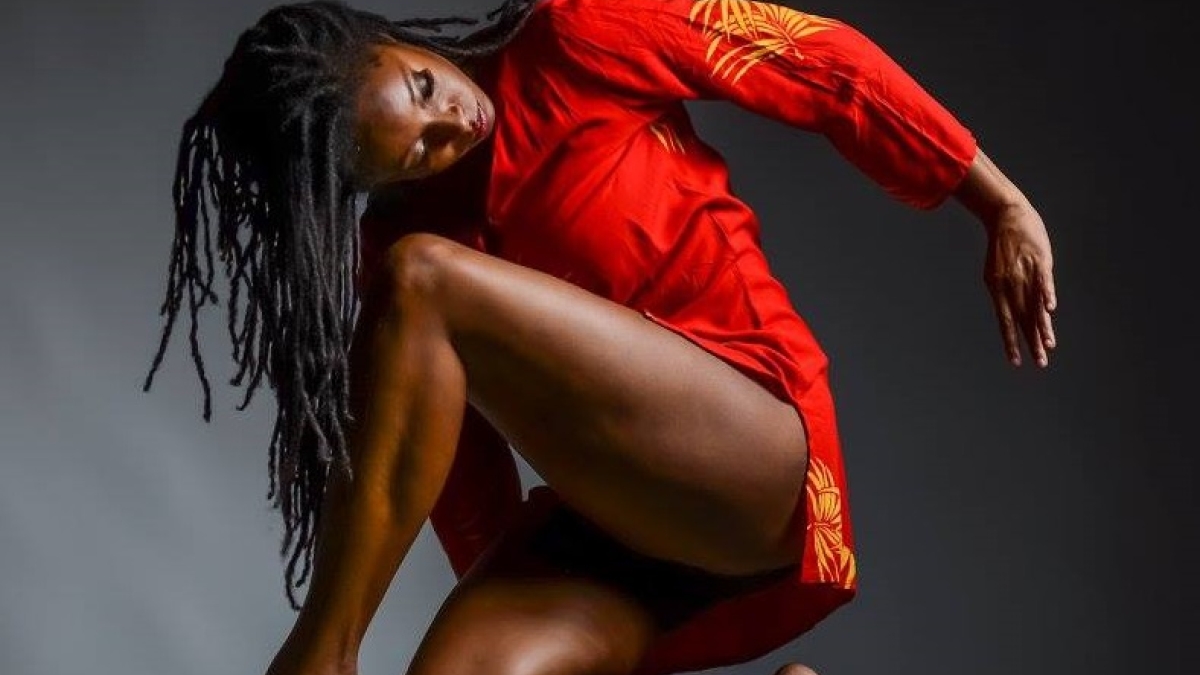ASU professor Kiki Jenkins wins top honors for science dance

Kiki Jenkins, assistant professor in the School for the Future of Innovation in Society. Photo by Daniel Suchman
Lekelia “Kiki” Jenkins is known for pioneering a new field of study around the invention and adoption of marine conservation technology. An assistant professor in the School for the Future of Innovation in Society, Jenkins has earned fellowships from the American Association for the Advancement of Science, the Ford Foundation, and the David H. Smith Conservation Research Fellowship Program.
Her pioneering spirit has just earned her another award for her research — this time from the International Sea Turtle Society for her work on science dance.
Science dance is a little known performance art form in which participants attempt to communicate key aspects of technical research through body movement. Those who are aware of science dance may have first learned about it through the AAAS Dance Your PhD competition, the largest and most visible event of its kind, which began in 2008.
Jenkins ended up taking second place in that inaugural competition’s postdoctoral category.
Her unique approach to research communication hit some initial roadblocks early on. When she began dancing during college and graduate school, some viewed her activity unfavorably. After becoming an assistant professor at her former university, she helped form a science-art collective to foster growth of the science-art in the university community. For Jenkins it was an opportunity to combine her work and dance.
“I had written a science-art grant for the collective and that seemed to be a step too far,” she said. Jenkins was encouraged to support the group at a distance.
Science dance has been gaining recognition in recent years, however. Higher participation and online voting at new competitions like the ISTS's, along with a National Academy of Sciences study on science-art, are all signs that science dance is becoming more visible.
“It has been expanding significantly, but I think the culture around it is not transforming as quickly,” she said. “Particularly in academia, it’s still perceived as a curiosity.”
ASU is different, she said. “I can do science-dance here as scholarship,” she said. “It’s accepted and supported.”
Jenkins is developing her own methodological contributions to science dance, building in part on the work of 2002 MacArthur Genius award-winning choreographer Liz Lerman, now a professor in ASU’s School of Film, Dance, and Theatre.
For the recent ISTS competition, Jenkins formed her dancers into two groups. The principals all read one of Jenkins’ scientific papers and chose to represent one of its four major findings. In rehearsal, they explained their choices and Jenkins was happy to hear them making connections, both scholarly and personal, that she would never have expected.
The second group received a mini-lecture about the topic and created their own movements within a predetermined improvisational structure. Weeks later, Jenkins saw interesting results.
“The participants had retained the information and shared it with colleagues who did nothing related to my work — one of whom came back to me with those same terms and ideas,” she said. “That’s what I was most excited about with this dance and the process we used — how it transformed the people who participated and then their network of people.”
Jenkins and Benjamin Sodenkamp, the coordinator of her Dance Impacts! project, are busy with future dance projects. They are planning another participatory science dance for an event in October. In May, they took second in the US Zouk Open Competition (a form of contemporary social dance) in the semi-professional division and are now transforming the dance into a showpiece.
Meanwhile, they are writing grant proposals to explore how they can expand the use of dance in informal STEM education and social change.
“We want to make this transition from it being seen as just a novelty to something that’s seen as a tool,” she said.
For the time being, science dance is still coming into its own, but Jenkins sees that as an advantage.
“For now, most people who do science dances in the world are doing it for the first time,” she said. “It’s a new experience for them, and that can be really pivotal for change and innovation and science, in and of itself.”
Follow this link to view Dr. Jenkins’ award-winning dance from the International Sea Turtle Society competition.
Written by Adam Gabriele
More Science and technology

ASU-led space telescope is ready to fly
The Star Planet Activity Research CubeSat, or SPARCS, a small space telescope that will monitor the flares and sunspot activity…

ASU at the heart of the state's revitalized microelectronics industry
A stronger local economy, more reliable technology, and a future where our computers and devices do the impossible: that’s the…

Breakthrough copper alloy achieves unprecedented high-temperature performance
A team of researchers from Arizona State University, the U.S. Army Research Laboratory, Lehigh University and Louisiana State…

